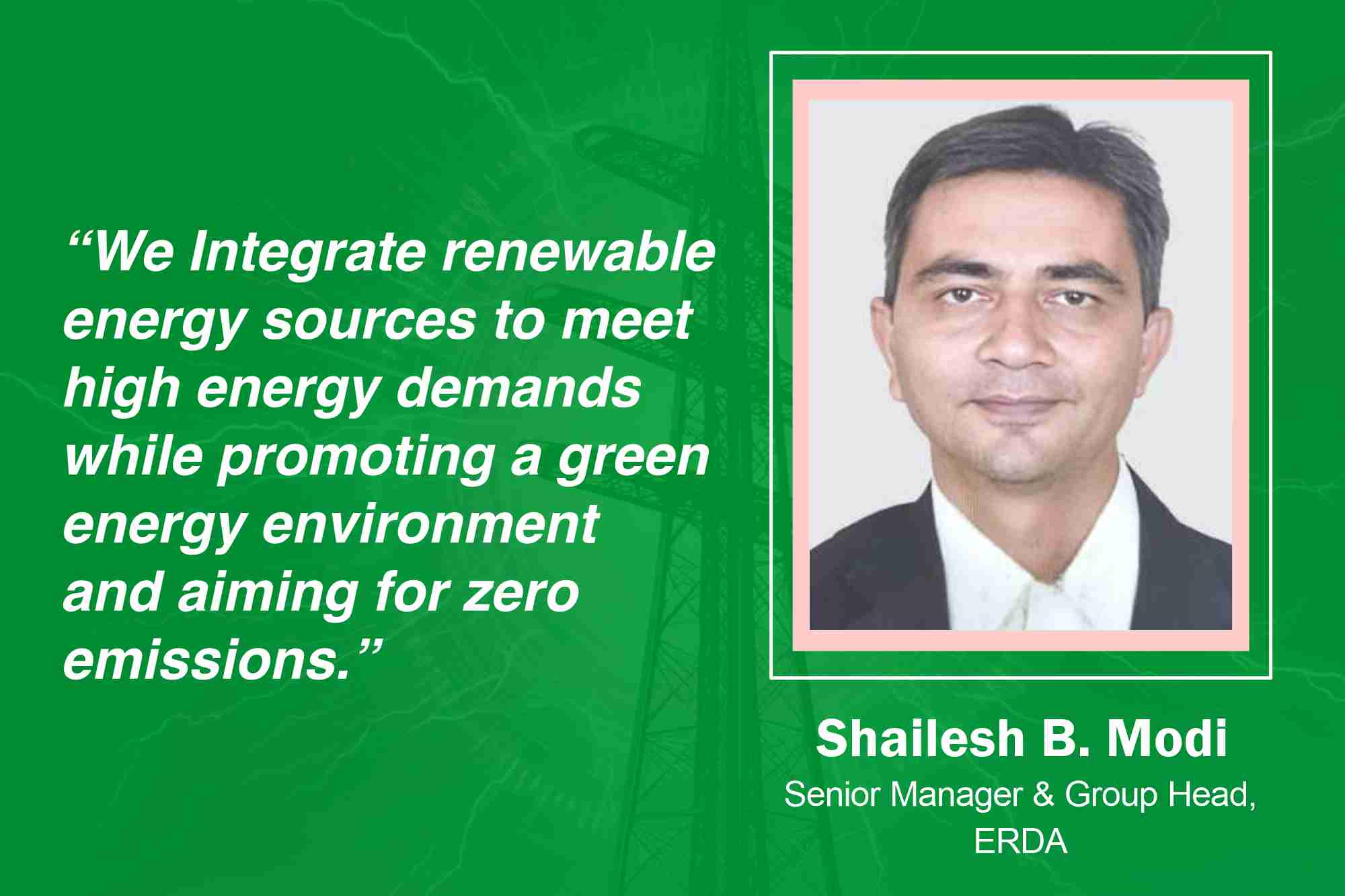Renewable energy facing inertia challenge in India
By EPR Magazine Editorial July 25, 2024 4:20 pm IST
By EPR Magazine Editorial July 25, 2024 4:20 pm IST

Integrating renewable energy sources such as solar PV and wind systems is essential to meet high energy demands while promoting a green energy environment and aiming for zero emissions.
Shailesh B. Modi, Senior Manager & Group Head- ERDA
The Central government has set an ambitious target, with renewable energy to generate 50 per cent of total power by 2030. However, a significant challenge is that renewable energy sources, unlike conventional synchronous generators, do not contribute to inertia response, which is crucial for maintaining frequency stability in power grids. These sources are connected via inverters, lacking the necessary inertia. As the integration of renewable energy increases, potential frequency stability issues could arise, highlighting the need for innovative solutions to address this inherent limitation.
Current frequency and power control
Conventional synchronous generators and Automatic Generation Control (AGC) manage frequency and active power control. Automatic Generation Control adjusts the input mechanical energy to synchronous machines based on demand variations, maintaining frequency stability. However, this mechanism relies on the kinetic energy stored in synchronous machines, which will be insufficient in a future dominated by inverter-based renewable generation.
Concept of virtual inertia
Virtual inertia can be implemented to address the low inertia issue. Virtual inertia involves a control algorithm that simulates inertia by adjusting the power output of renewable energy sources based on real-time grid parameters such as frequency and voltage. This method helps maintain frequency stability in grids with high renewable integration.
Several control strategies can optimise virtual inertia, including adaptive control, neural networks, and predictive controls like model predictive control and fuzzy logic. These strategies must be tailored to the specific requirements and characteristics of the power system.Inertia estimation techniques
Accurate inertia estimation is critical for steady power system operation. Future grids will require advanced technologies like Wide Area Measurement Systems (WAMS) and Phasor Measurement Units (PMUs) to provide precise data for inertia estimation. These technologies will play a vital role in managing the variability and uncertainty of renewable energy sources.
Market-based approach
The potential for a market-based approach to inertia is high. In the future, inertia could become a tradable commodity, generating units demanding financial compensation for providing synthetic or virtual inertia. This approach could ensure sufficient inertia services, contributing to the overall stability and reliability of power systems.
Virtual inertia will be essential in future power grids with predominant renewable energy integration. Various control strategies and advanced technologies will be required to manage frequency stability and ensure reliable power system operation. Additionally, a market-based approach to inertia could provide a cost-effective solution for maintaining grid stability.
We use cookies to personalize your experience. By continuing to visit this website you agree to our Terms & Conditions, Privacy Policy and Cookie Policy.